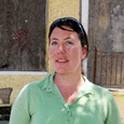
When Cuba found itself abruptly cutoff from trade with Soviet bloc in 1989, the country spun into an economic crisis of unprecedented severity. Suddenly lacking the oil, pesticides, and machinery with which to grow crops, and without access to the imported food that had previously sustained it, Cuba’s foodshed suddenly caved. Nearly twenty-five years later, this food crisis has vanished almost as swiftly as it arrived, in no small part due to the country’s innovative and widespread urban food production efforts. This research addresses the urban design framework that Cuba created in order to support urban agriculture initiatives, and suggests ideas, opportunities and innovation that could inform the development of productive landscapes in other parts of the world. Almost a dozen distinct types of urban farming approaches are visible in Havana, Cuba; these forms are a direct response to the 1989 food crisis and reflect the flexible modes of selfprovisioning that followed. These farm types also expose the context, constraints, and cultural norms unique to Havana’s urban environment, revealing changing attitudes towards urbanism in Havana’s capital city. At the same time, this urban agriculture system can be distilled into a readable organizational taxonomy; a kit of parts approach to food production that could well translate to other parts of the world. With natural and man-made disasters increasing in both frequency and severity, architects, landscape architects and planners can help cities plan for resilience by identifying replicable methods for self-sufficiency. This body of research focuses on the model urban farming programs underway in Cuba, which demonstrate self-sufficiency and food security in an oilscarce environment. The goal of this paper is to share Havana’s innovative urban agricultural interventions: food provisioning solutions that have been tested over the last twenty-five years and could be reproduced in other political and climatic zones.
- Havana,
- Cuba,
- Urban Agriculture,
- Post-oil,
- Food Security
Available at: http://works.bepress.com/carey_clouse/6/
